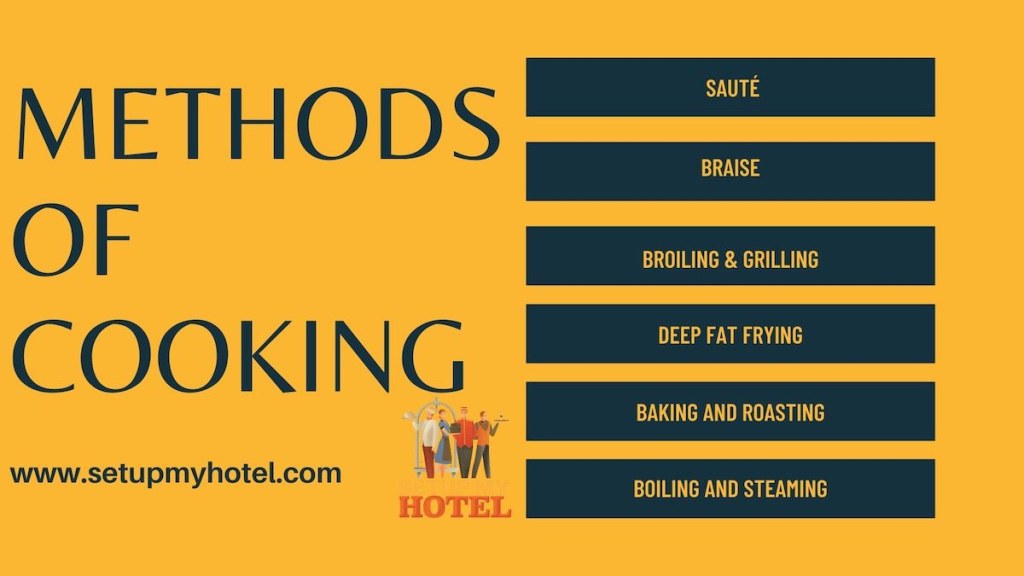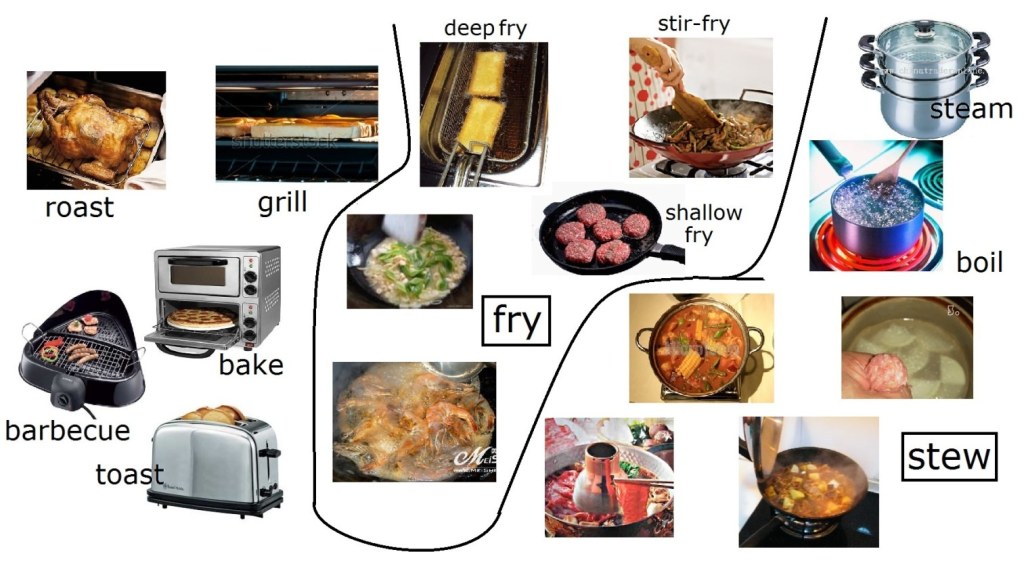Cooking Methods in the Hospitality Industry
Introduction
Dear Readers,
Welcome to our article on cooking methods in the hospitality industry. In this fast-paced world, the culinary landscape is constantly evolving, and it is essential for professionals in the hospitality industry to keep up with the latest trends and techniques. Understanding various cooking methods is crucial for chefs, kitchen staff, and aspiring culinary professionals to deliver exceptional dishes. In this article, we will explore the different cooking methods used in the hospitality industry and their significance in creating memorable dining experiences.

Image Source: setupmyhotel.com
Let’s dive right in!
What are Cooking Methods?
🍳 Cooking methods refer to the techniques and procedures used to prepare food. These methods involve the application of heat, either through direct or indirect means, to transform raw ingredients into delicious dishes. Each cooking method brings its unique flavors, textures, and aromas to the table, making them essential elements of culinary expertise. Let’s delve into the different cooking methods used in the hospitality industry.
Grilling
Grilling is a popular cooking method that involves cooking food directly over an open flame or high heat source. It is commonly used for grilling steaks, burgers, vegetables, and seafood. Grilling adds a smoky and charred flavor to the food, enhancing its taste and appeal.
Sautéing

Image Source: bngkolkata.com
Sautéing is a quick and versatile cooking method that involves cooking food in a small amount of fat over high heat. It is commonly used for stir-frying vegetables, searing meats, and creating flavorful sauces. Sautéing allows for the retention of the food’s natural flavors and textures.
Baking
Baking is a dry-heat cooking method that involves cooking food in an enclosed space, such as an oven. It is commonly used for baking bread, cakes, pastries, and casseroles. Baking results in a golden brown exterior and a soft, moist interior.
Boiling
Boiling is a cooking method that involves immersing food in a liquid and heating it until it reaches its boiling point. It is commonly used for cooking pasta, rice, vegetables, and soups. Boiling helps to soften food and infuse it with the flavors of the cooking liquid.
Steaming
Steaming is a gentle and healthy cooking method that involves cooking food using the steam generated from boiling water. It is commonly used for steaming vegetables, seafood, and dumplings. Steaming helps to retain the food’s nutrients, colors, and flavors.
Roasting
Roasting is a dry-heat cooking method that involves cooking food in an oven at a high temperature. It is commonly used for roasting meats, poultry, and vegetables. Roasting results in a rich and caramelized exterior, while the interior remains tender and juicy.
Advantages and Disadvantages of Cooking Methods in the Hospitality Industry
Advantages
👍 Versatility: Different cooking methods offer a wide range of options to prepare diverse dishes.
👍 Flavor Enhancement: Each cooking method brings its unique flavors, textures, and aromas to the food.
👍 Nutrient Retention: Some cooking methods, like steaming, help retain the nutrients in the food.
👍 Visual Appeal: Properly executed cooking methods enhance the presentation of the dish.
Disadvantages
👎 Time-consuming: Certain cooking methods require more time and attention to achieve desired results.
👎 Skill Requirement: Mastering different cooking methods requires training and practice.
👎 Equipment Dependency: Some cooking methods may require specific equipment or tools.
Frequently Asked Questions (FAQs)
1. What is the safest cooking method in the hospitality industry?
The safest cooking method in the hospitality industry is steaming. It does not involve direct contact with flames or hot surfaces, reducing the risk of burns or accidents. Additionally, steaming helps retain the food’s nutrients and flavors.
2. Which cooking method is best for preserving the texture of vegetables?
Sautéing is the best cooking method for preserving the texture of vegetables. The high heat and quick cooking time help retain their crunchiness and vibrant colors, adding a delightful visual and textural element to your dishes.
3. How does grilling enhance the flavor of meats?
Grilling enhances the flavor of meats through the Maillard reaction, where the high heat caramelizes the surface, creating a desirable crust. This adds a smoky and charred flavor that enhances the taste and aroma of the meat.
4. Can boiling vegetables lead to nutrient loss?
Boiling vegetables can lead to some nutrient loss, especially water-soluble vitamins like vitamin C and B vitamins. To minimize nutrient loss, it is recommended to use minimal cooking liquid and cook vegetables for a short period.
5. Do different cooking methods affect the texture of meats?
Yes, different cooking methods affect the texture of meats. Slow cooking methods, such as braising and stewing, result in tender and succulent meats, while high-heat methods, like grilling and pan-searing, create a crispy exterior and a juicy interior.
Conclusion
In conclusion, understanding various cooking methods is crucial for professionals in the hospitality industry to excel in their culinary endeavors. Each cooking method brings its unique flavors, textures, and visual appeal to the table, creating memorable dining experiences. By mastering these techniques, chefs and kitchen staff can elevate their dishes and satisfy the palates of their guests. So, whether you’re grilling a steak, sautéing vegetables, or baking a cake, remember that the cooking method you choose plays a significant role in the outcome. Keep experimenting and honing your skills to create extraordinary culinary delights!
Thank you for reading!
Warm regards,
[Your Name]
Final Remarks
Dear Readers,
We hope you found this article on cooking methods in the hospitality industry informative and insightful. It is essential to stay updated with the latest cooking techniques to excel in the culinary world. Remember to experiment, have fun, and keep honing your skills to create extraordinary dishes that leave a lasting impression on your guests.
Should you have any further questions or require additional information, please feel free to reach out to us. We are always here to help.
Happy cooking!
Warm regards,
[Your Name]